¿Do you love Mexican cuisine? If so, you’ve probably heard of Cotija cheese, a hard, salty cheese used in many traditional Mexican recipes such as tacos, enchiladas and refried beans. Cotija cheese is a key ingredient in Mexican cuisine and its unique flavor and hard texture make it perfect for adding a touch of flavor to any dish. But do you know how Cotija cheese is produced and how it is made? In this article, we will explore in depth the production of Cotija cheese, from the selection of the milk to its final packaging, as well as some of its most common substitutes in the kitchen. If you are a lover of Mexican cuisine, you cannot miss this interesting guide about Cotija cheese.
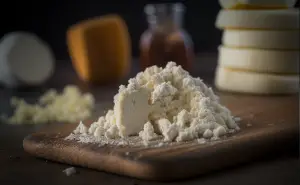
What is Cotija Cheese
Cotija cheese is one of Mexico’s most popular cheeses, with a rich history and a variety of uses in the kitchen. This cheese originates in the town of Cotija, in the state of Michoacán, where it has been made for hundreds of years. In this article, we will explore the history of Cotija cheese, its characteristics, its uses in cooking and how it is produced.
History of Cotija cheese
Cotija cheese originated in the town of Cotija, in the state of Michoacán, Mexico. The Michoacán region is known for its cheeses, and Cotija cheese is one of the oldest cheeses in the region. According to legend, Cotija cheese was created in pre-Hispanic times, when indigenous peoples made goat cheese. With the arrival of the Spaniards, the cheese-making technique expanded and improved, and Cotija cheese became one of the most popular cheeses in the region..
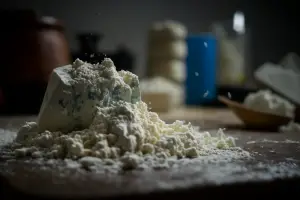
Characteristics of Cotija cheese
Cotija cheese is a hard, salty cheese made from cow’s or goat’s milk. It comes in two varieties: fresh Cotija cheese and aged Cotija cheese. Fresh Cotija cheese is soft and moist, with a slightly acidic and salty flavor. Aged Cotija cheese, on the other hand, is drier and crunchier, with a more intense and salty flavor. Both varieties are used in different dishes and recipes, depending on their characteristics.
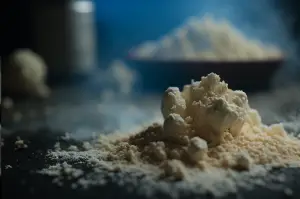
Uses
Cotija cheese is used in a wide variety of Mexican dishes, both traditional and modern. It is mainly used as a condiment or an accompanying ingredient, to add flavor and texture to dishes. Some of the most popular dishes that use Cotija cheese are:
- Enchiladas: Cotija cheese is sprinkled on top of enchiladas, providing a salty flavor and crunchy texture (like these crackers).
- Tacos: Cotija cheese is used to fill tacos, along with other ingredients such as meat, vegetables and sauces.
- Esquites: Esquites are a corn dish served in a glass with various ingredients, such as Cotija cheese, cream, chili powder and lime juice.
- Chiles rellenos: Cotija cheese is used as a filling for chiles poblanos, along with other ingredients such as meat and vegetables.
- Beans: Cotija cheese is used as a condiment for refried beans, adding flavor and texture.
In addition to these dishes, Cotija cheese is also used in salads, soups, stews and many other Mexican dishes. Because of its distinctive flavor and texture, Cotija cheese is an essential ingredient in Mexican cuisine.
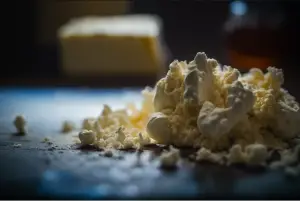
Cotija cheese production
This famous cheese originating from the town of Cotija, in the state of Michoacán, is characterized for being a hard and salty cheese, traditionally made with cow’s or goat’s milk. Below, we will explore how Cotija cheese is produced to reach world-class quality, from the selection of the milk to its final packaging, as well as some of its most common substitutes in the kitchen.
How Cotija is made
The production of Cotija cheese is an artisanal process that has been passed down from generation to generation in the Michoacán region. The following is a description of the main steps involved in the production of Cotija cheese:
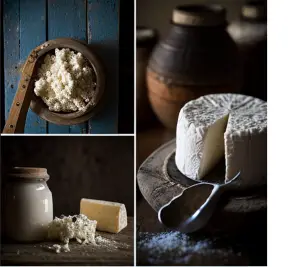
Milk selection
The first step in the production of Cotija cheese is the selection of the milk. The milk used to make Cotija cheese can be cow’s or goat’s milk, although most producers use cow’s milk because it is more readily available. The milk must be fresh and of high quality, to guarantee a quality final product.
Pasteurization of milk
Once the milk is selected, it undergoes a pasteurization process to eliminate any bacteria or microorganisms that may contaminate the cheese. This process is carried out by heating the milk to a high temperature for a certain period of time and then cooling it rapidly. This process not only eliminates microorganisms, but also helps to stabilize the milk and guarantee the quality of the final product.
Milk coagulation
Once the milk is pasteurized, rennet is added, which is an enzyme that helps to coagulate the milk. The milk is left to stand for a few hours, until a solid mass known as curd is formed.
Cutting and shaping
Once the milk has coagulated, the curd is cut into small pieces with a knife. The curd is then molded into cylinder-shaped molds, which are pressed to extract the whey from the milk.
Salting and drying
Once molded, the cheeses are salted, which gives them their characteristic salty flavor. The cheeses are then left to dry in the open air for several days. During this time, a hard, dry rind forms on the surface of the cheese.
Aging
The last step in the production of Cotija cheese is aging. Depending on the variety of cheese desired, it can be aged for different periods of time. Fresh Cotija cheese is sold without aging, while aged Cotija cheese can be aged for several months. During this time, the cheese loses some of its moisture, becomes harder and acquires a more intense and salty flavor.
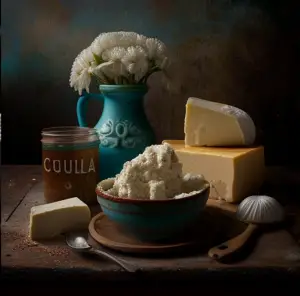
Cotija cheese substitutes
While Cotija cheese is a key ingredient in Mexican cuisine, it may not always be easy to find in some parts of the world (like lean cheese).
As mentioned above, Cotija is a popular ingredient in Mexican cuisine, known for its dry, salty texture that makes it ideal for use in a variety of dishes, from tacos to salads. However, it can be difficult to find this cheese in some parts of the world or even in some regions of Mexico. Luckily, there are some Cotija cheese substitutes that can offer a similar taste and texture to the dishes in which it is used. Here we will explore some of the most popular Cotija cheese substitutes so you can enjoy your favorite dishes without having to look too hard.
-
Feta Cheese
Feta cheese is a popular substitute for Cotija cheese, as it has a similarly salty flavor and a dry, crumbly texture. Feta cheese originates from Greece and is made from sheep’s milk or a mixture of sheep’s and goat’s milk. Like Cotija cheese, feta cheese is a mature, salty cheese, making it ideal for use in salads and vegetable dishes. It can also be used in tacos, although it will not have the same exact flavor as Cotija cheese.
-
Parmesan Cheese
Another substitute for Cotija cheese is Parmesan cheese, which has a salty flavor and strong aroma. Parmesan cheese is made in Italy from cow’s milk, and is a hard, dry cheese that grates easily. Although Parmesan cheese has a slightly different flavor than Cotija cheese, its dry texture and ability to add flavor and texture to dishes make it a suitable substitute in many recipes. It is an excellent choice for use in pastas and sauces.
-
Goat Cheese
Goat cheese is a soft, creamy cheese made from goat’s milk. While it does not have the same texture as Cotija cheese, its salty, creamy flavor makes it a popular substitute in salads and vegetable dishes. Goat cheese is a versatile cheese that can be used in many recipes, from salads to pizzas.
-
Sheep cheese
Sheep cheese is another substitute for Cotija cheese that can add a salty flavor and dry texture to dishes. This cheese is made from sheep’s milk, and has a strong, earthy flavor. Sheep cheese is a popular cheese in Mediterranean cuisine, and can be used in salads, pastas and sauces. Its dry, crumbly texture makes it an excellent substitute for Cotija cheese.
-
Asiago Cheese
Asiago cheese is an Italian cheese made from cow’s milk. It is a mature, salty cheese that has a dry, crumbly texture, similar to Cotija cheese. Asiago cheese can be used in many dishes, from pastas or grated over salads, soups, pasta dishes and sauces, it is served with red wines. It could also be used as an appetizer cheese, depending on how it has been ripened and pressed. Fresh Asiago is cut in slices to prepare panini, sandwiches or any other type of dish.

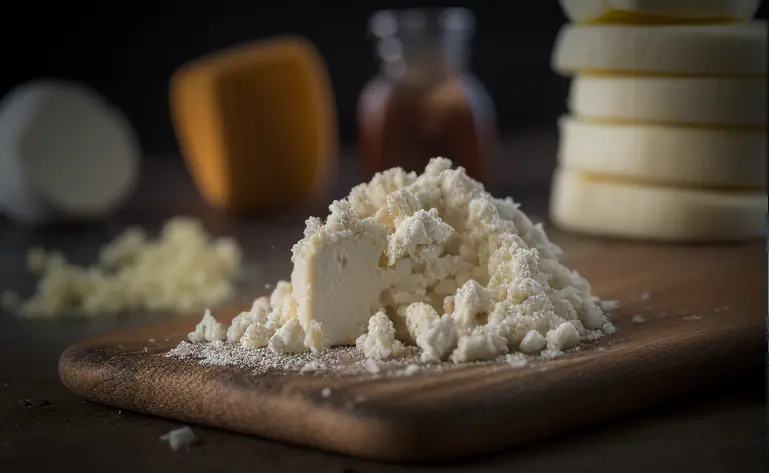
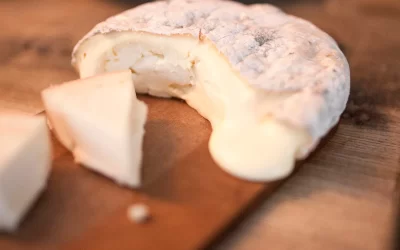
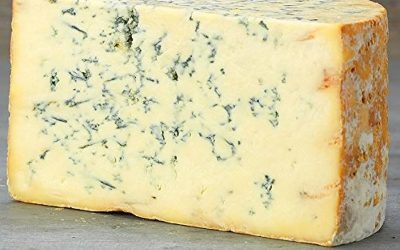
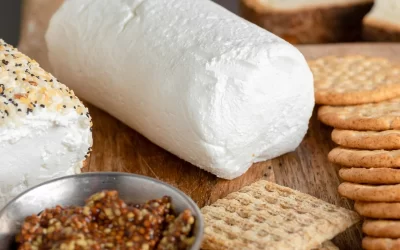
0 Comments